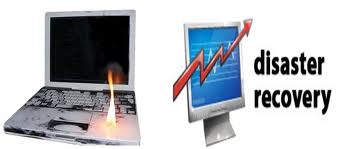Tech
IT Disaster Recovery – Create A Fool Proof Plan

Every business in this modern era is vulnerable to disasters, especially if the major operations of the business rely on the IT infrastructure. Other businesses are also always vulnerable to theft, fire, flood, and other natural disasters which can completely ruin the business. The story is not much different for companies that rely heavily on IT and internet based systems. Cyber-threads are much more severe and can hit anywhere and everywhere. Hence, it is critical for businesses to have a detailed Disaster Protection and Recovery plan to ensure they can fight these disasters and come back up as soon as possible after the attack.

Data Management:
There is huge demand of cloud computing in the IT industry and more and more businesses are opting for the reliable cloud hosting services to ensure their data is safe, secure and easily accessible. Cloud storage is a Managed Infrastructure that provides businesses the servers to securely save their data and give access of the data to authorized people only.
A normal file sharing website or web hosting won’t cut it anymore; you have to go for a reliable Cloud Storage service if you really want to protect your data from being stolen or destroyed and ensure business continuity. If you are not already using a Cloud Storage, you should start using it right now. Cloud Storage services offer storage on a cluster of servers which ensure that the data is not lost due to hardware or power failure, as the data is stored in multiple locations. Furthermore, having your files saved in a centralized location, ensure that the workers can work from anywhere in the world as long as they have internet access.
Recovery Software:
It is critical to have your data backed up in multiple locations to ensure that you can get the latest copy of your data and restore it on your main server. There are various fully managed Data Backup services offering Disaster recovery Servers (also known as DSR). When a disaster occurs, and you have lost all of your data, being able to recover is the key. If you don’t have a latest backup stored somewhere, you can consider your business “out-of-business”. Thankfully these DR servers can perform automated backups of your data so that you don’t have to worry about backing it up each and every day.
Hot Desk:
Hot Desking is an IT disaster recovery planning strategy to fight a disaster that has damaged one of the branches of any business, through hot Desking, they can ask workers from another branch to help them out and provide any files. E.g. if one branch can’t connect to the cloud storage, the other branch workers can download the files from cloud storage and provide the files to the affected branch.
Conclusion:
No matter how streamlined your business operation is, if you are not prepared for a disaster or don’t know how you would recover from a disaster, you are definitely going to face a tough time keeping your business up and running if something bad happens.
Author Bio
Maegan Pulman is a freelance IT consultant and technology enthusiast. She is active in local and international IT events and is always on the lookout for the latest industry trends.
-

 Tech11 years ago
Tech11 years agoCreating An e-Commerce Website
-

 Tech11 years ago
Tech11 years agoDesign Template Guidelines For Mobile Apps
-

 Business6 years ago
Business6 years agoWhat Is AdsSupply? A Comprehensive Review
-

 Business10 years ago
Business10 years agoThe Key Types Of Brochure Printing Services
-

 Tech8 years ago
Tech8 years agoWhen To Send Your Bulk Messages?
-

 Tech5 years ago
Tech5 years ago5 Link Building Strategies You Can Apply For Local SEO
-

 Law5 years ago
Law5 years agoHow Can A Divorce Lawyer Help You Get Through Divorce?
-

 Home Improvement6 years ago
Home Improvement6 years agoHоw tо Kеер Antѕ Out оf Yоur Kitсhеn































